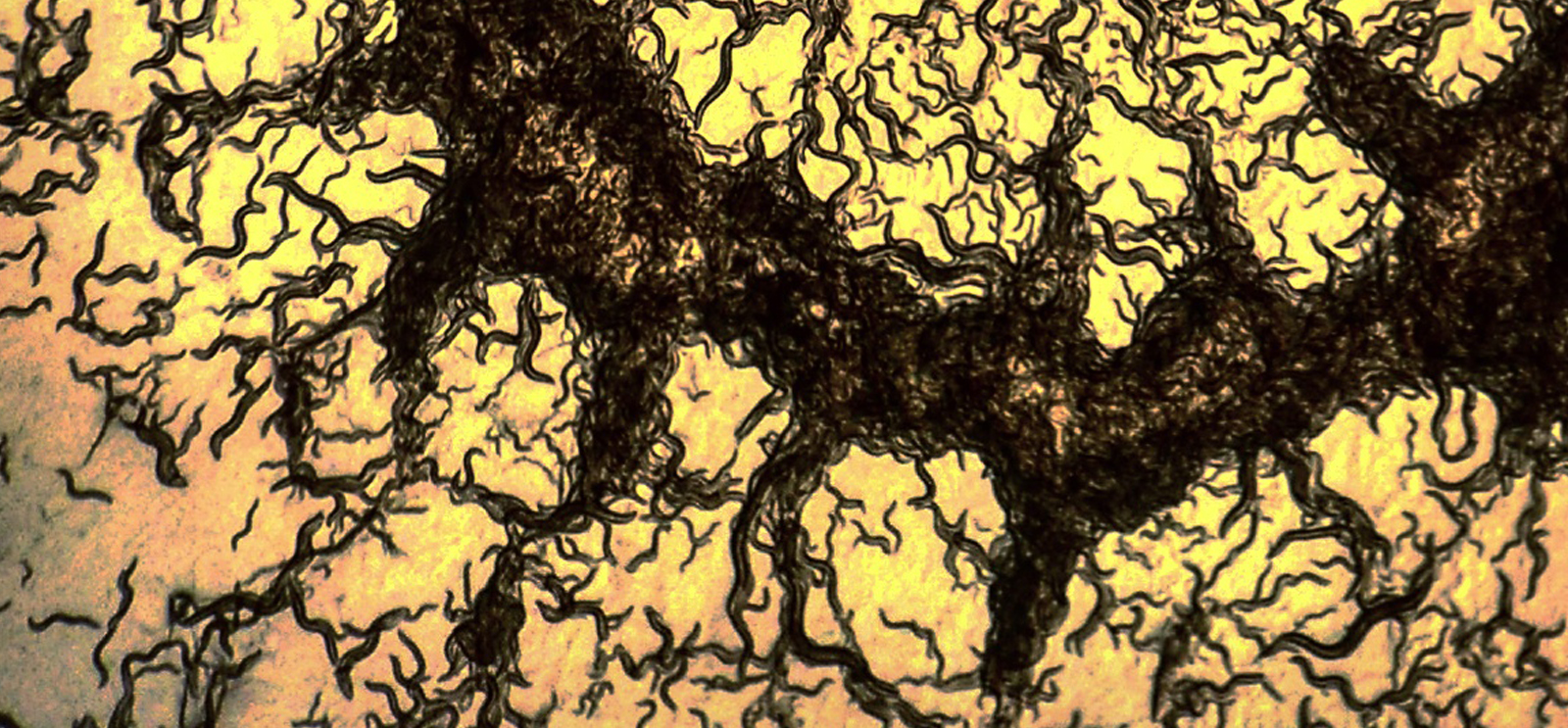
Close-up of Caenorhabditis elegant. (Photo courtesy Adam Brown/David Biron)
A worm glamour shot reveals the unexpected beauty of science.
Humble Caenorhabditis elegans isn’t much to look at. But for scientists, the tiny roundworm’s simplicity is its best asset: its uncomplicated anatomy helps researchers understand how the worm’s behavior results from the interaction of its cells and molecules.
Adam Brown is a fourth-year graduate student in the lab of David Biron, assistant professor in physics. (The lab’s URL is, yes, worm.uchicago.edu.) Brown is studying how C. elegans behaves when food is present and how it makes quick decisions about whether to feed or keep crawling. The team learned the neurotransmitter serotonin is key in regulating C. elegans’s ability to handle situations where food is placed in discrete patches. Without it, “the worms will lose the ability to effectively forage in that complex environment,” Brown told UChicago Medicine’s Science Life blog.
It was an exciting finding: “Anytime you have the ability to look at a very detailed level and make convincing connections between biology and behavior, it’s an important step in neuroscience,” Brown said.
In the lab Brown was often taken by the worms’ unusual formations. With practice and a steady hand, he taught himself to take phone camera photos of what he saw through the lens of the microscope.
This image depicts the aftermath of a worm feast: a large drop of bacteria had been added to a worm colony living on an agar plate. The worms had eaten their way from the center of the bacteria droplet to the edge, where there was still food left.
Part of being a scientist is “seeing really striking things every day,” Brown says. He hopes his worm glamour shot sheds light on the importance and beauty of scientific discovery.
